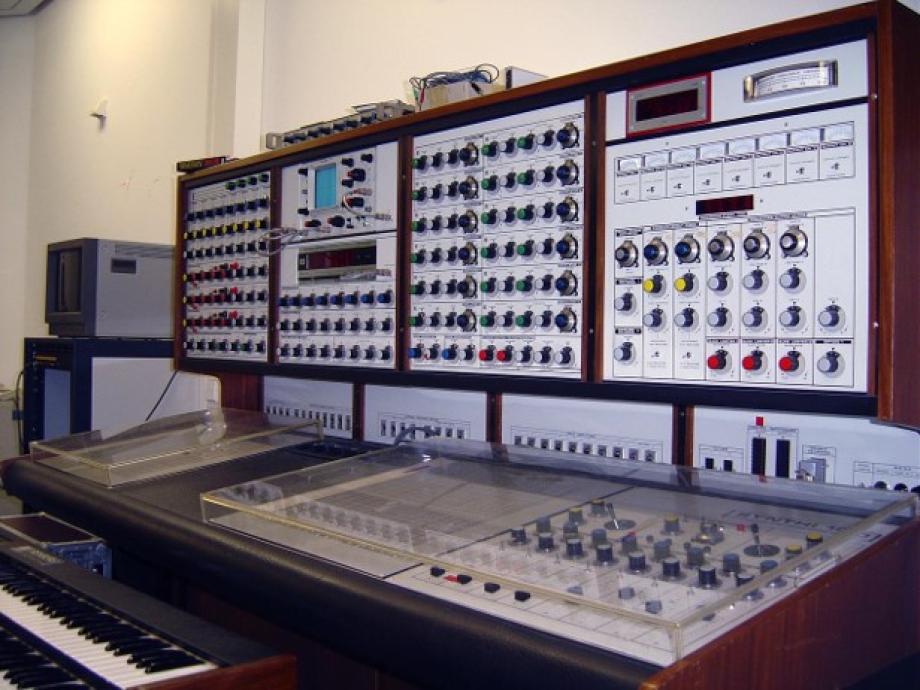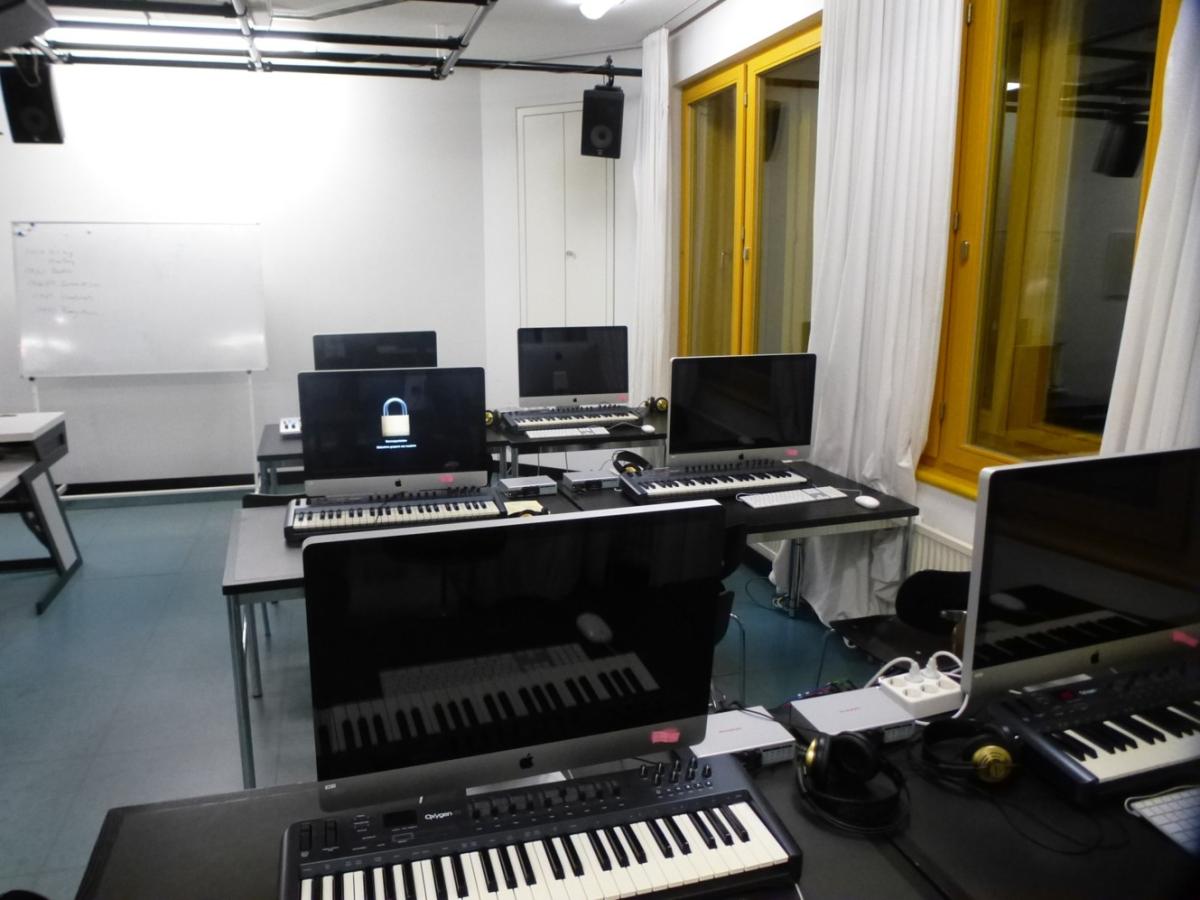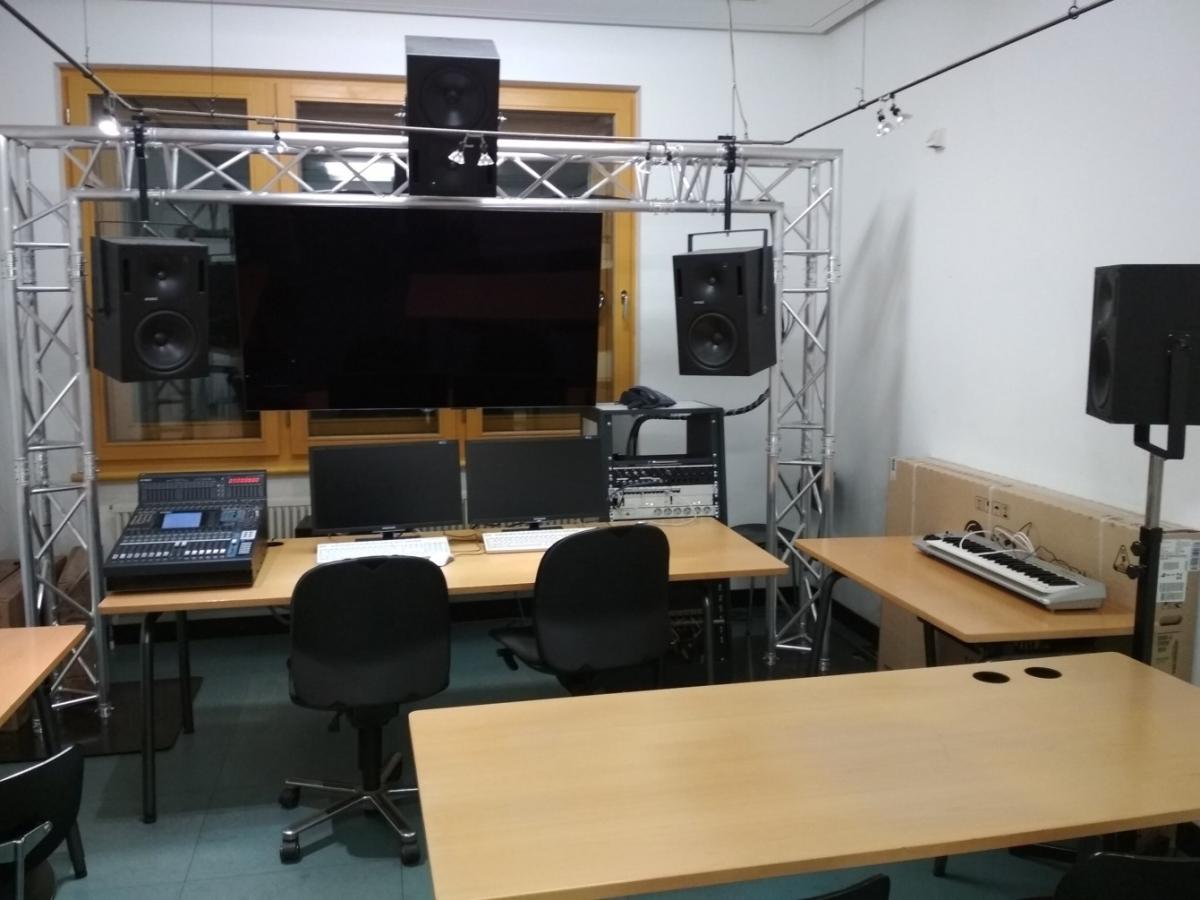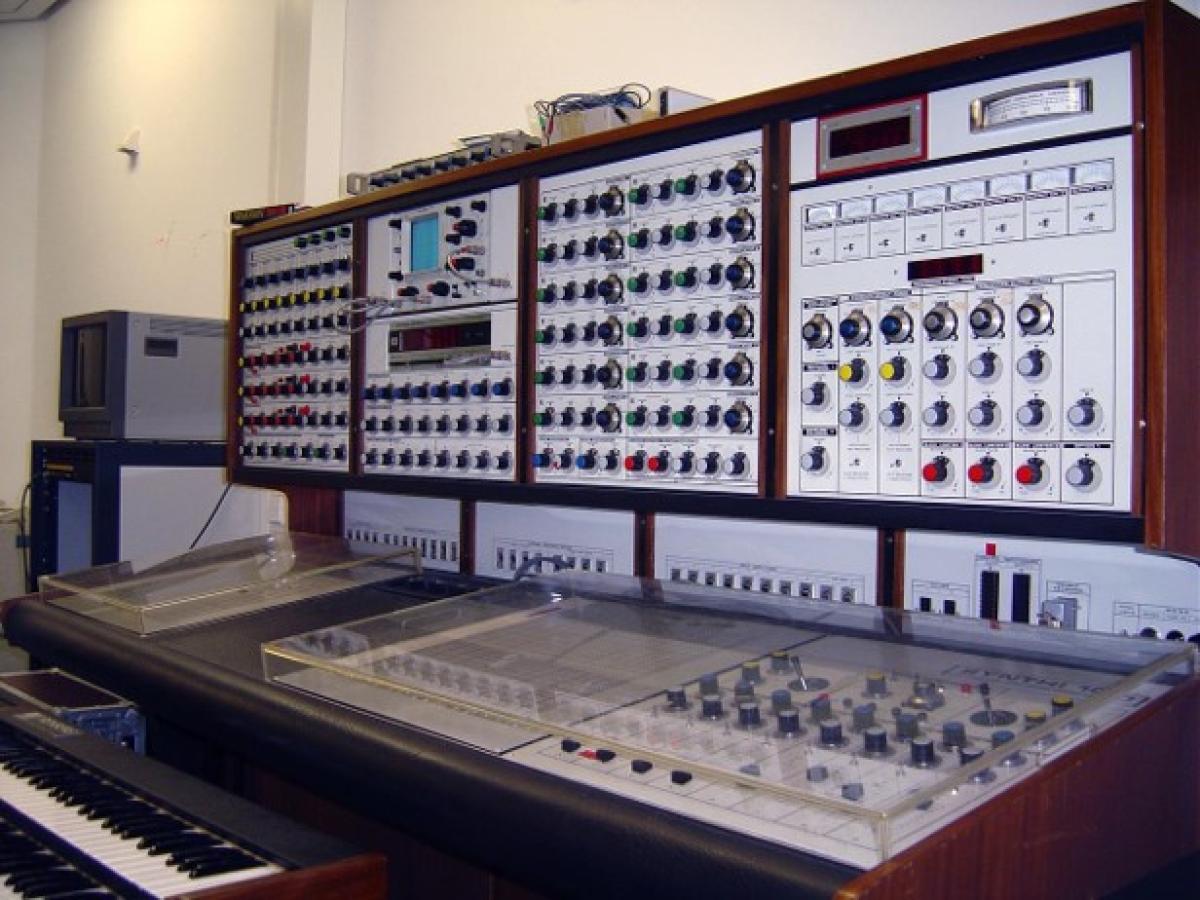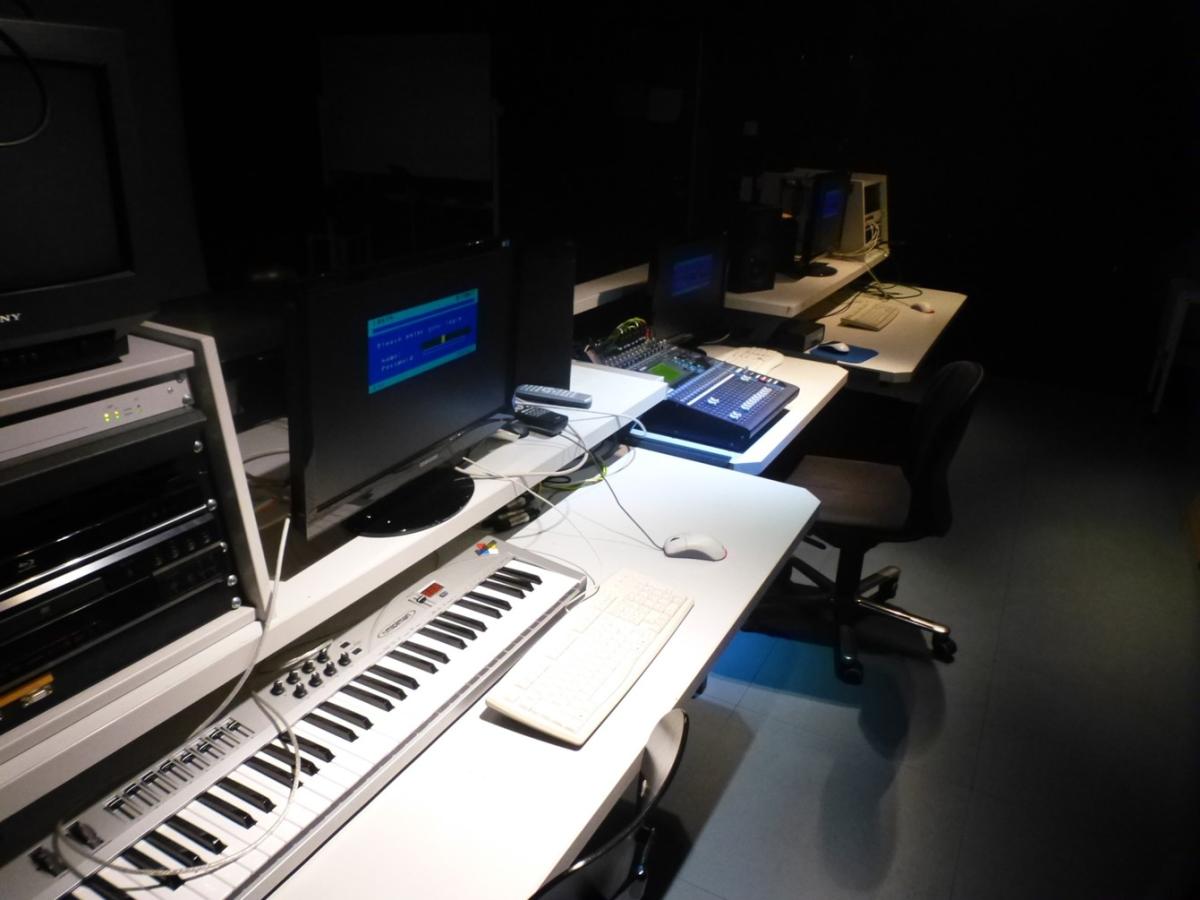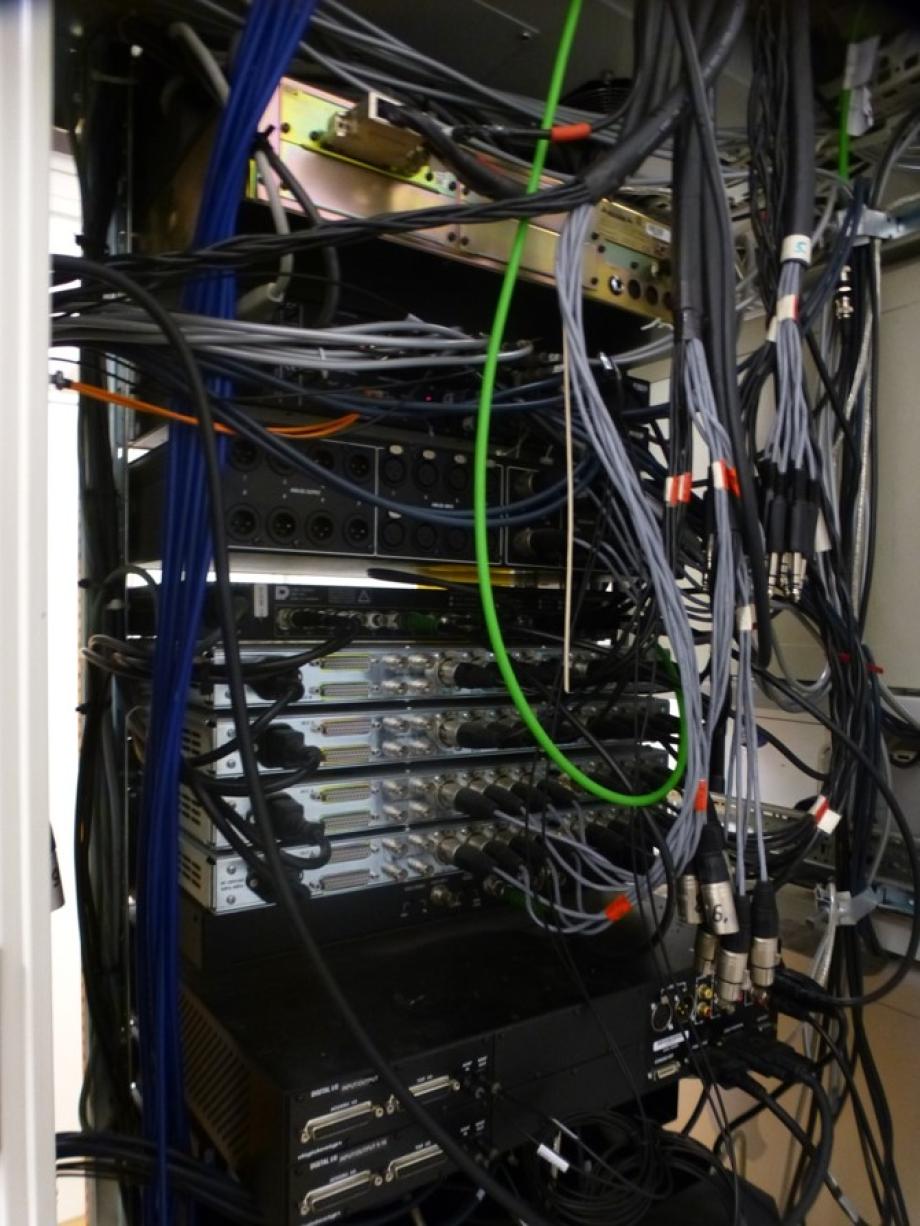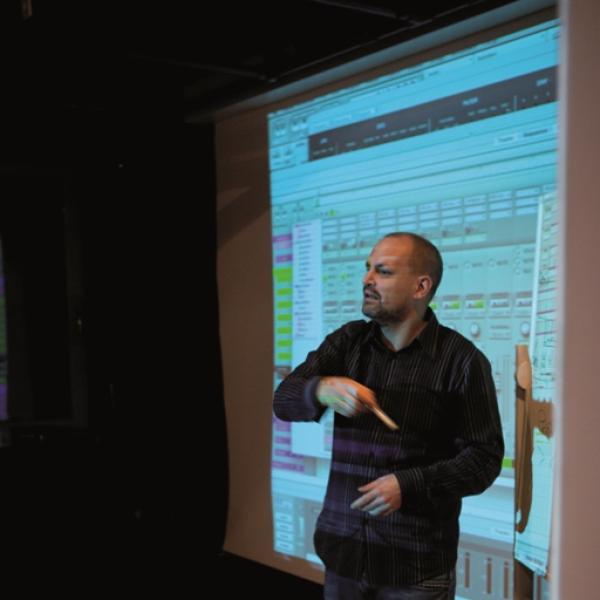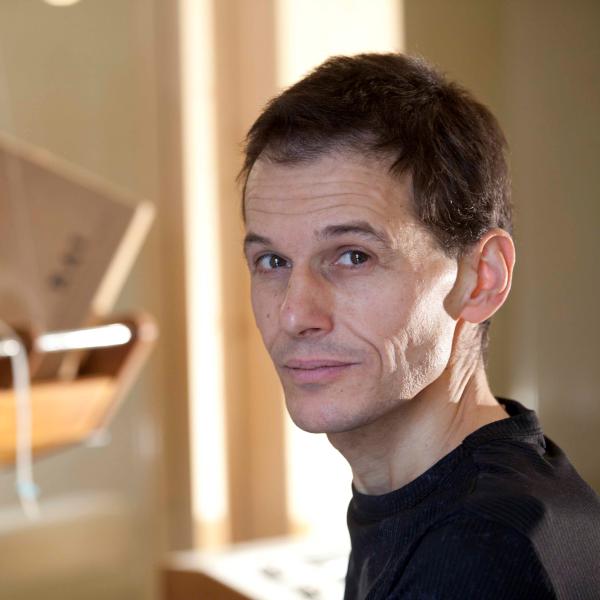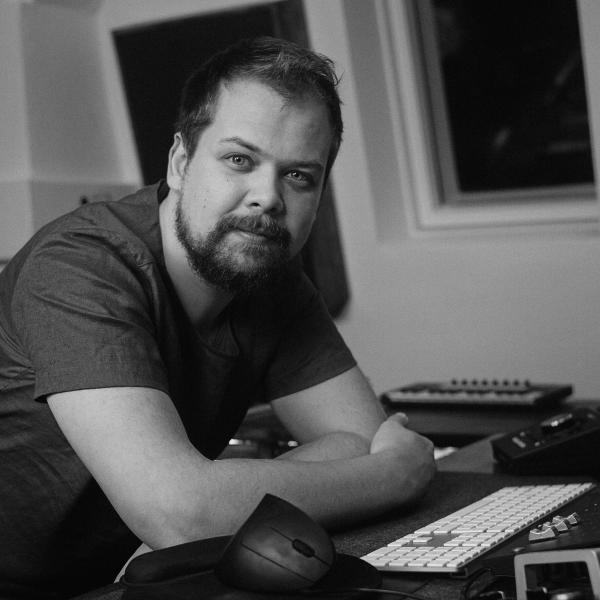Studio for Electronic Music
The Studio for Electronic Music (StEM) at the HMDK Stuttgart was founded in 1973 by Erhard Karkoschka and led until 1989. In 1989, Rainer Wehinger and Ulrich Süße took over the leadership. In 1996, the StEM moved to new premises and is one of the largest electronic music studios at German music universities. From 1995 to 2024, Dipl.-Sound engineer Igor Stepanov managed the hardware and software; Prof. Marco Stroppa has been the head of the StEM since 1999.
Electronic or electroacoustic music is not a separate course of study at the HMDK Stuttgart, but rather a possible focus within the disciplines of composition, music theory, jazz, and music education. The studio also collaborates with students and instructors from instrumental programs.
The studio's goals include providing education and conveying electroacoustic concepts in musical and artistic practice, as well as supporting all students at the university in realizing performances with electroacoustic components, particularly in the context of contemporary music. The areas of focus include studio technology, sound analysis and processing, computer-assisted composition, sound synthesis, and live electronics. In addition to these areas, instruction is provided in event technology, video technology for concerts and production, media practice, musical acoustics, and computer notation.
The studio organizes concerts featuring electronic and live electronic music both at and outside the HMDK. Since its inception, there has been a regular cooperation with the "next generation" festival at the ZKM (Karlsruhe).
The studio comprises:
3 main rooms
- Large media room (H1-0815): black-painted room for lighting effects, with a 5.1 surround sound system, a low-noise projector and screen for large classes, seminars, exams, and rehearsals
- Small media room (H1-0814): equipped with a 5.1 surround sound system, a large monitor for small group lessons and individual projects
- Classroom (H1-0812): six workstations with iMacs, audio interfaces, piano keyboards, and headphones, as well as an 8-channel system for recording large-scale productions with video, suitable for group lessons with individual media. Special feature: EMS Synthi 100, a large analog synthesizer from the 1970s.
2 adjoining rooms
- Equipment room (H1-0813) for computers, ProTools systems, LAN
- Office and storage room (H1-0816)



















